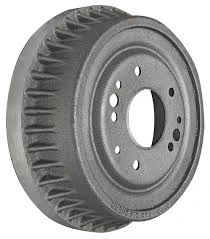
-
 Afrikaans
Afrikaans -
 Albanian
Albanian -
 Amharic
Amharic -
 Arabic
Arabic -
 Armenian
Armenian -
 Azerbaijani
Azerbaijani -
 Basque
Basque -
 Belarusian
Belarusian -
 Bengali
Bengali -
 Bosnian
Bosnian -
 Bulgarian
Bulgarian -
 Catalan
Catalan -
 Cebuano
Cebuano -
 Corsican
Corsican -
 Croatian
Croatian -
 Czech
Czech -
 Danish
Danish -
 Dutch
Dutch -
 English
English -
 Esperanto
Esperanto -
 Estonian
Estonian -
 Finnish
Finnish -
 French
French -
 Frisian
Frisian -
 Galician
Galician -
 Georgian
Georgian -
 German
German -
 Greek
Greek -
 Gujarati
Gujarati -
 Haitian Creole
Haitian Creole -
 hausa
hausa -
 hawaiian
hawaiian -
 Hebrew
Hebrew -
 Hindi
Hindi -
 Miao
Miao -
 Hungarian
Hungarian -
 Icelandic
Icelandic -
 igbo
igbo -
 Indonesian
Indonesian -
 irish
irish -
 Italian
Italian -
 Japanese
Japanese -
 Javanese
Javanese -
 Kannada
Kannada -
 kazakh
kazakh -
 Khmer
Khmer -
 Rwandese
Rwandese -
 Korean
Korean -
 Kurdish
Kurdish -
 Kyrgyz
Kyrgyz -
 Lao
Lao -
 Latin
Latin -
 Latvian
Latvian -
 Lithuanian
Lithuanian -
 Luxembourgish
Luxembourgish -
 Macedonian
Macedonian -
 Malgashi
Malgashi -
 Malay
Malay -
 Malayalam
Malayalam -
 Maltese
Maltese -
 Maori
Maori -
 Marathi
Marathi -
 Mongolian
Mongolian -
 Myanmar
Myanmar -
 Nepali
Nepali -
 Norwegian
Norwegian -
 Norwegian
Norwegian -
 Occitan
Occitan -
 Pashto
Pashto -
 Persian
Persian -
 Polish
Polish -
 Portuguese
Portuguese -
 Punjabi
Punjabi -
 Romanian
Romanian -
 Russian
Russian -
 Samoan
Samoan -
 Scottish Gaelic
Scottish Gaelic -
 Serbian
Serbian -
 Sesotho
Sesotho -
 Shona
Shona -
 Sindhi
Sindhi -
 Sinhala
Sinhala -
 Slovak
Slovak -
 Slovenian
Slovenian -
 Somali
Somali -
 Spanish
Spanish -
 Sundanese
Sundanese -
 Swahili
Swahili -
 Swedish
Swedish -
 Tagalog
Tagalog -
 Tajik
Tajik -
 Tamil
Tamil -
 Tatar
Tatar -
 Telugu
Telugu -
 Thai
Thai -
 Turkish
Turkish -
 Turkmen
Turkmen -
 Ukrainian
Ukrainian -
 Urdu
Urdu -
 Uighur
Uighur -
 Uzbek
Uzbek -
 Vietnamese
Vietnamese -
 Welsh
Welsh -
 Bantu
Bantu -
 Yiddish
Yiddish -
 Yoruba
Yoruba -
 Zulu
Zulu
Feb . 01, 2025 06:13
Back to list
drum and hat brakes
When exploring the numerous braking systems used today in vehicles, drum and hat brakes often stand out because of their unique structural design and specific application advantages. Delving into the realm of drum and hat brakes requires understanding their engineering principles and their extensive utilization in various vehicle types over the years.
Expertise in both systems goes deeper into their materials and construction. Drum brakes generally utilize a cast iron construction, which provides excellent thermal capacity and stiffness but can be prone to rust, thereby necessitating consistent maintenance. Hat brakes, on the other hand, often incorporate composite materials or lighter aluminum, promoting efficiency without excessive weight addition. For consumers and manufacturers alike, trust in these systems is cemented by their tested resilience and adaptation over time. Drum brakes, though considered traditional, offer a high level of trustworthiness, attributable to their extensive use and proven reliability in numerous vehicle fleets worldwide. Hat brakes, with their cutting-edge development, symbolize the merging of classic and modern engineering, signifying a hybrid adaptation for future vehicles. Vehicle specialists and industry experts continuously analyze these systems to enhance performance further. Upgrading components with wear-resistant materials or integrating sensors for real-time performance tracking are just a few innovations that maintain the relevance and safety of drum and hat brakes. Thus, in the domain of automotive braking technologies, drum and hat brakes represent both a historical foundation and a modern marvel. Whether considering them for their lightweight, simple designs, or investing in cutting-edge materials, they remain integral to vehicular safety and performance. Understanding their operation, suitability, and evolution in the automotive landscape ensures that manufacturers and consumers make informed, safe, and cost-effective choices regarding vehicle braking systems.


Expertise in both systems goes deeper into their materials and construction. Drum brakes generally utilize a cast iron construction, which provides excellent thermal capacity and stiffness but can be prone to rust, thereby necessitating consistent maintenance. Hat brakes, on the other hand, often incorporate composite materials or lighter aluminum, promoting efficiency without excessive weight addition. For consumers and manufacturers alike, trust in these systems is cemented by their tested resilience and adaptation over time. Drum brakes, though considered traditional, offer a high level of trustworthiness, attributable to their extensive use and proven reliability in numerous vehicle fleets worldwide. Hat brakes, with their cutting-edge development, symbolize the merging of classic and modern engineering, signifying a hybrid adaptation for future vehicles. Vehicle specialists and industry experts continuously analyze these systems to enhance performance further. Upgrading components with wear-resistant materials or integrating sensors for real-time performance tracking are just a few innovations that maintain the relevance and safety of drum and hat brakes. Thus, in the domain of automotive braking technologies, drum and hat brakes represent both a historical foundation and a modern marvel. Whether considering them for their lightweight, simple designs, or investing in cutting-edge materials, they remain integral to vehicular safety and performance. Understanding their operation, suitability, and evolution in the automotive landscape ensures that manufacturers and consumers make informed, safe, and cost-effective choices regarding vehicle braking systems.
Prev:
Next:
Latest news
-
Rear Drum Brakes Maintenance TipsNewsAug.04,2025
-
Key Components Affecting Brake Drum FunctionNewsAug.04,2025
-
Important Inspection for Truck Drum BrakeNewsAug.04,2025
-
How to Prepare for Changing Rear Drum BrakesNewsAug.04,2025
-
Essential Tools for Cleaning Drum Brakes ProperlyNewsAug.04,2025
-
Brake Drum Function GuideNewsAug.04,2025
-
Safety Features of Red Brake DrumsNewsAug.01,2025
